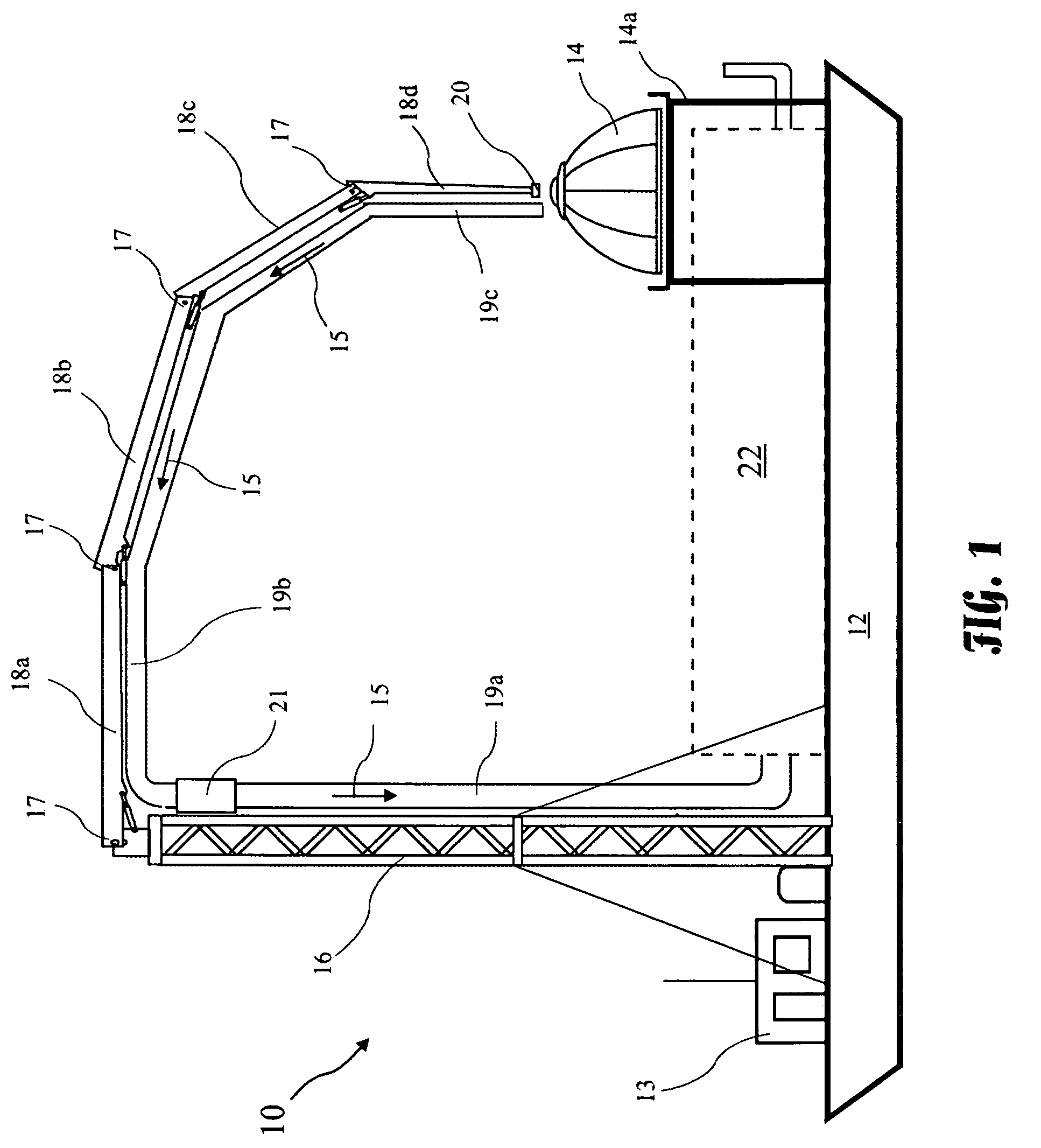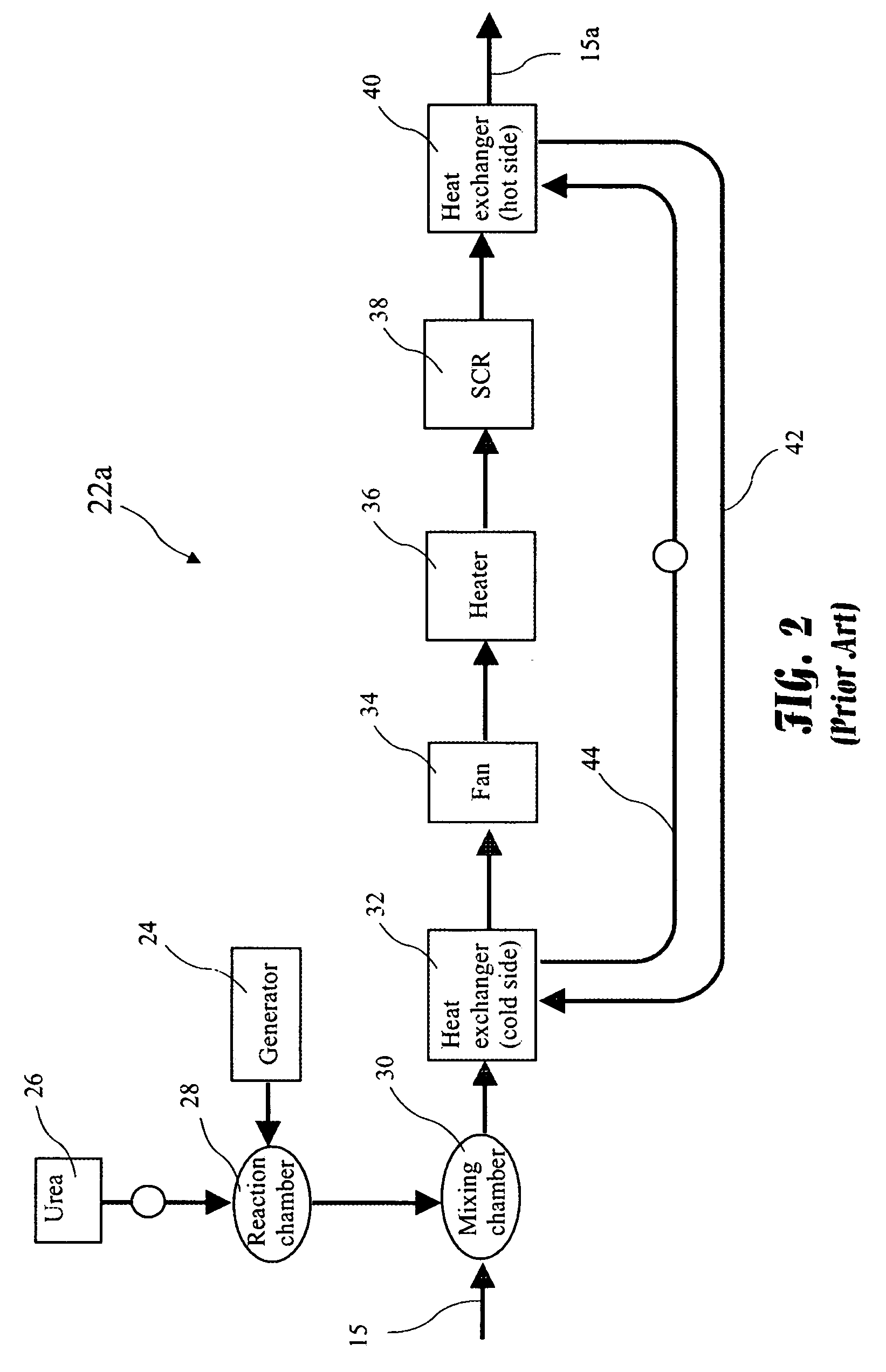Air pollution control system for ocean-going vessels
a technology for air pollution control and ocean-going vessels, applied in the direction of marine propulsion, vessel construction, separation processes, etc., can solve the problems of pollution that can affect the efficiency and service life of the scr, affect the health of port workers and residents of surrounding communities, and may cause cosmetic and/or physical damage to local structures and equipment, so as to reduce the amount of oxide of nitrogen, reduce the effect of particulate matter and reducing the effect of pollution
- Summary
- Abstract
- Description
- Claims
- Application Information
AI Technical Summary
Benefits of technology
Problems solved by technology
Method used
Image
Examples
Embodiment Construction
[0022] The following description is of the best mode presently contemplated for carrying out the invention. This description is not to be taken in a limiting sense, but is made merely for the purpose of describing one or more preferred embodiments of the invention. The scope of the invention should be determined with reference to the claims.
[0023] An Advanced Maritime Emissions Control System (AMECS) 10 suitable for incorporation of the present invention is shown generally in FIG. 1. The AMECS 10 comprises at least one Exhaust Intake Bonnet (EIB) 14, an Emissions Capture System (ECS), and an Emissions Control Unit (ECU) 22. The AMECS 10 is preferably mounted on an Unpowered Seagoing Barge (USB) 12. The ECS comprises a tower 16, an articulating arm comprising four segments 18a, 18b, 18c, and 18d, a duct tower portion 19a running along the tower 16, and duct articulating arm portion 19b running along the actuating arm. The four segments 18a, 18b, 18c, and 18d are connected by joints ...
PUM
 Login to View More
Login to View More Abstract
Description
Claims
Application Information
 Login to View More
Login to View More - R&D
- Intellectual Property
- Life Sciences
- Materials
- Tech Scout
- Unparalleled Data Quality
- Higher Quality Content
- 60% Fewer Hallucinations
Browse by: Latest US Patents, China's latest patents, Technical Efficacy Thesaurus, Application Domain, Technology Topic, Popular Technical Reports.
© 2025 PatSnap. All rights reserved.Legal|Privacy policy|Modern Slavery Act Transparency Statement|Sitemap|About US| Contact US: help@patsnap.com



